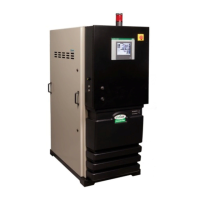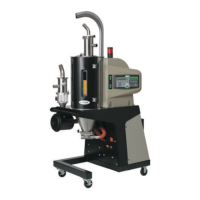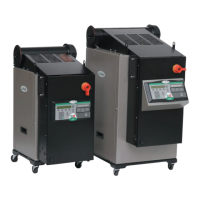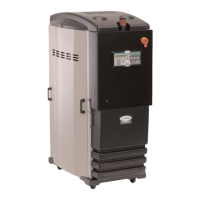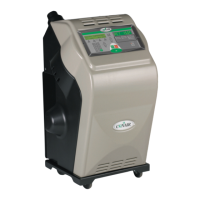M a i n t e n a nc e l 5- 3
5
M a i n t e n a n c e
✐
NOTE: Portable dewpoint moni-
tors purchased from Conair are
provided with a male connector
that plugs into the Dewpoint
Check port. If you purchased
your portable instrument else-
where, the male connector is
available through the Conair
parts department.
NOTE: The dewpoint check port
was not included on early dry-
ers. It can be added easily.
Contact the Conair parts depart-
ment or follow the alternate
procedure.
✐
Replacement dewpoint moni-
tors, male connectors and
dewpoint check ports are
available from Conair.
Contact Conair Parts
(800) 458 1960
From outside of the
United States, call:
(814) 437 6861
C h e c k i n g th e D e w p o in t
It is a good idea to monitor the dewpoint performance of your dryer periodically with a cali-
brated portable dewpoint monitor, to ensure it is performing at maximum capacity. Even if
your dryer has a dewpoint readout, comparing it to a portable instrument periodically will
confirm that the dewpoint sensor and readout is performing properly.
To check dewpoint:
1 Connect your portable dewpoint meter to the dew-
point check port of the dryer.
2 Turn on the portable instrument, and ensure there is
positive airflow through the sensor.
3 Monitor the readout and allow ample time for it to stabilize before disconnecting it.
Some dewpoint monitors require a substantial amount of time for residual moisture to be
purged from the sensor.
4 In the event the dewpoint in not satisfactory, refer to the Troubleshooting section of
the manual.
Alternate Procedure: (for dryers with no dewpoint check port)
1 Stop dryer and allow it to cool.
2 Open the right side panel of the dryer, and locate the process heater tube.
3 At the bottom end (cool air inlet) of the process heater tube, remove 1/8 inch NPT
pipe plug and connect your portable dewpoint monitor at this location. If there are
existing connections for the dryer’s dewpoint sensor, locate a 2nd 1/8 inch NPT port, or
connect your dewpoint sensor in series with the dryer sensor. Do not install a tee to split
the air between the dryer’s sensor and your portable instrument. This may cause one of
them to be starved for adequate sample air.
4 Turn on the dryer.
5 Turn on the portable instrument, and ensure there is positive airflow through the
sensor.
6 Monitor the readout and allow ample time for it to stabilize before disconnecting
the portable instrument. Some dewpoint monitors require a substantial amount of time
for residual moisture to be purged from the sensor.
7 In the event the dewpoint is not satisfactory, refer to the Troubleshooting section of the
manual.
8 Stop the dryer, and allow it to cool down. Then disconnect your portable instrument
and replace any pipe plugs that may have been removed.
9 Close side panels and start the dryer.

